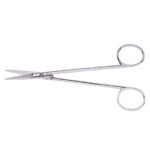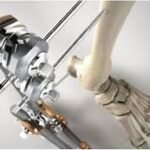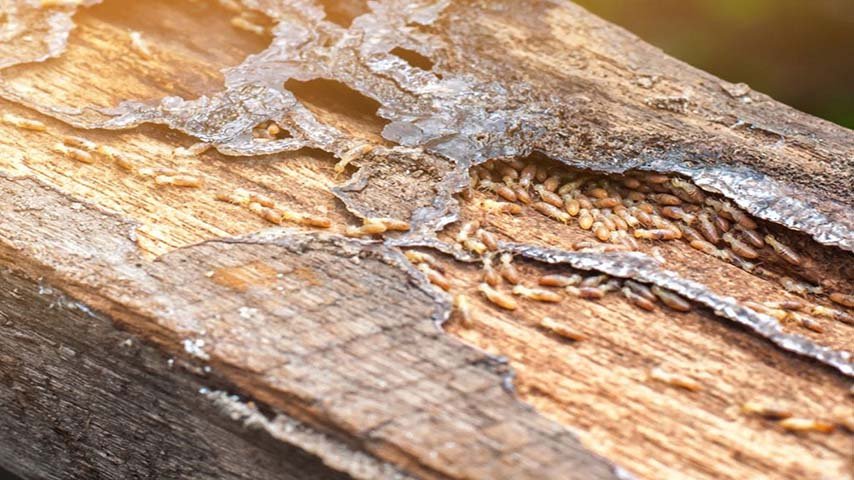Termites are one of the most destructive pests, causing billions of dollars in damage annually. These small insects feed on wood and can severely compromise the structural integrity of a building if left unchecked. Identifying termite infestations early and undertaking prompt repairs is crucial to maintaining the safety and value of a home or property. In this guide, we’ll explore the steps involved in termite damage repair, from detecting the damage to restoring affected areas.
Understanding Termite Infestations
Before diving into termite damage repair, it’s important to understand the nature of termite infestations. Termites are social insects that live in colonies and feed primarily on cellulose, a material found in wood and other organic matter. The two main types of termites that cause damage to homes are:
Subterranean termites: These termites build mud tubes from the ground to reach their food sources. They are usually found in moist areas and can enter buildings through cracks in the foundation.
Drywood termites: Unlike subterranean termites, drywood termites do not require soil contact. They infest dry wood, often entering buildings through vents or cracks in the woodwork.
The extent of termite damage largely depends on the length of time they have been active, the type of termites, and the materials they have infested.
Signs of Termite Damage
Early detection is key to minimizing the cost of repairs and preventing further damage. Here are some common signs of termite activity and damage to look out for:
Hollow-sounding wood: If you tap on wood in your home and it sounds hollow, termites may have eaten away the inside, leaving a fragile outer layer.
Mud tubes: Subterranean termites build mud tubes to travel between their colony and their food source. These are often found along walls, foundations, or other surfaces leading from the ground to wooden structures.
Discarded wings: After mating, termites shed their wings. Finding piles of discarded wings near doors, windows, or other entry points is a sign of an infestation.
Frass (termite droppings): Drywood termites produce small, pellet-like droppings called frass. These can accumulate near areas of infestation, like window sills or wooden beams.
Cracked or distorted paint: Termites can cause moisture buildup in wood, which may lead to warped or bubbled paint.
If you notice any of these signs, it’s crucial to call a pest control professional immediately to assess the extent of the infestation.
Assessing Termite Damage
Once an infestation has been confirmed, the next step is to assess the damage. This requires a thorough inspection of the property, both inside and out. Professionals may use specialized tools like moisture meters, infrared cameras, and acoustic detectors to determine the full extent of the damage. Key areas to check include:
Structural beams: Termites often target load-bearing beams, which can compromise the structural integrity of a building.
Flooring: Termite damage to flooring can cause it to sag or feel spongy.
Walls: Damaged walls may show signs of buckling or peeling, especially if termites have been feeding on internal wood framing.
Ceilings and attics: Termites can also infest ceiling joists and attic rafters, which are often made of untreated wood.
After assessing the damage, the pest control expert will provide a detailed report outlining the areas affected and the extent of the structural compromise. This report is crucial for planning the necessary repairs.
Eliminating the Termite Infestation
Before any repair work can begin, the termite infestation must be fully eradicated. If termites are still active, they will continue to cause damage, rendering any repairs futile. There are several methods for eliminating termites, depending on the type and severity of the infestation:
Chemical treatments: Termiticides are chemicals applied to the soil or directly to the wood to kill termites. These treatments create a barrier that prevents termites from entering the building or kills those already inside.
Bait systems: Termite bait stations are placed around the property. The bait contains slow-acting poison that termites consume and carry back to their colony, eventually killing the entire colony.
Fumigation: For large infestations, fumigation may be necessary. This involves sealing the entire building and filling it with a gas that kills termites. Fumigation is often used for drywood termite infestations.
Heat treatment: Heat treatment involves raising the temperature inside the structure to levels that are lethal to termites. This method is eco-friendly and does not require the use of chemicals.
It’s important to ensure that all termites have been eliminated before moving forward with repairs. Failure to do so can result in re-infestation and further damage.
Repairing Structural Damage
Once the infestation is under control, the repair process can begin. Termite damage repair varies depending on the severity of the infestation and the extent of the damage. Below are common repair methods based on the level of damage:
Minor Damage
For minor damage, where only the surface of the wood is affected, repairs can often be done by applying wood hardeners or fillers. This helps reinforce the wood without needing to replace it entirely. Steps include:
Removing damaged areas: Scrape away any damaged or hollowed wood using a chisel.
Applying wood hardener: For small cracks or holes, wood hardener can be applied to the damaged areas to restore strength.
Filling gaps: Larger holes or cracks can be filled with wood filler or epoxy. After drying, the surface can be sanded and repainted or stained to match the surrounding area.
Moderate Damage
When damage extends beyond the surface but has not compromised the entire structure, partial replacement may be necessary. This often involves:
Replacing sections of wood: Cut out and replace the damaged portions of wood with new, treated wood. Be sure the new wood is pressure-treated to resist future infestations.
Reinforcing beams and joists: In cases where structural beams or joists are moderately damaged, additional supports (sistering) can be added to reinforce the area. This involves attaching new wood to the existing beams to restore their strength.
Severe Damage
In cases of severe damage, where the structure has been significantly compromised, more extensive repairs are necessary:
Replacing entire structures: Severely damaged structural elements, such as load-bearing walls or roof supports, may need to be replaced entirely. This can involve significant demolition and reconstruction work.
Consulting with a contractor: If the damage is severe, it’s essential to work with a professional contractor who has experience in termite damage repair. They will ensure that the repairs meet building codes and restore the structural integrity of the property.
Preventing Future Termite Infestations
Once repairs are complete, it’s important to take steps to prevent future infestations. This includes:
Regular inspections: Schedule annual termite inspections with a pest control professional to catch any signs of termites early.
Moisture control: Termites are attracted to moisture, so it’s important to fix any leaks, improve drainage, and ensure proper ventilation in crawl spaces.
Soil treatment: Apply termiticide treatments around the perimeter of the building to create a barrier that prevents termites from entering.
Sealing entry points: Seal cracks in the foundation, walls, and around windows and doors to prevent termites from finding their way inside.
Use of treated wood: When making repairs or building new structures, use treated wood that is resistant to termites.
Cost of Termite Damage Repair
The cost of termite damage repair can vary significantly depending on the severity of the damage, the size of the property, and the type of repairs required. Minor cosmetic repairs may cost a few hundred dollars, while extensive structural repairs can run into the tens of thousands of dollars. It’s important to get multiple quotes from contractors to ensure you’re getting a fair price.
Additionally, homeowners insurance typically does not cover termite damage, so the cost of repairs will likely come out of pocket. This is why early detection and regular termite inspections are so crucial—they can save homeowners from expensive repairs down the road.
Conclusion
Termite damage can be a homeowner’s worst nightmare, but with prompt action, the infestation can be eliminated, and the damage can be repaired. By understanding the signs of termite activity, assessing the damage accurately, and implementing the right repair and prevention strategies, you can protect your home from these destructive pests. Regular maintenance and professional inspections are essential in keeping termites at bay and ensuring the long-term integrity of your home or building.

















































